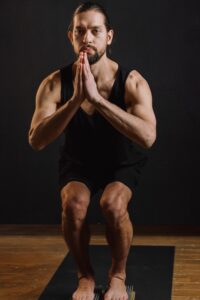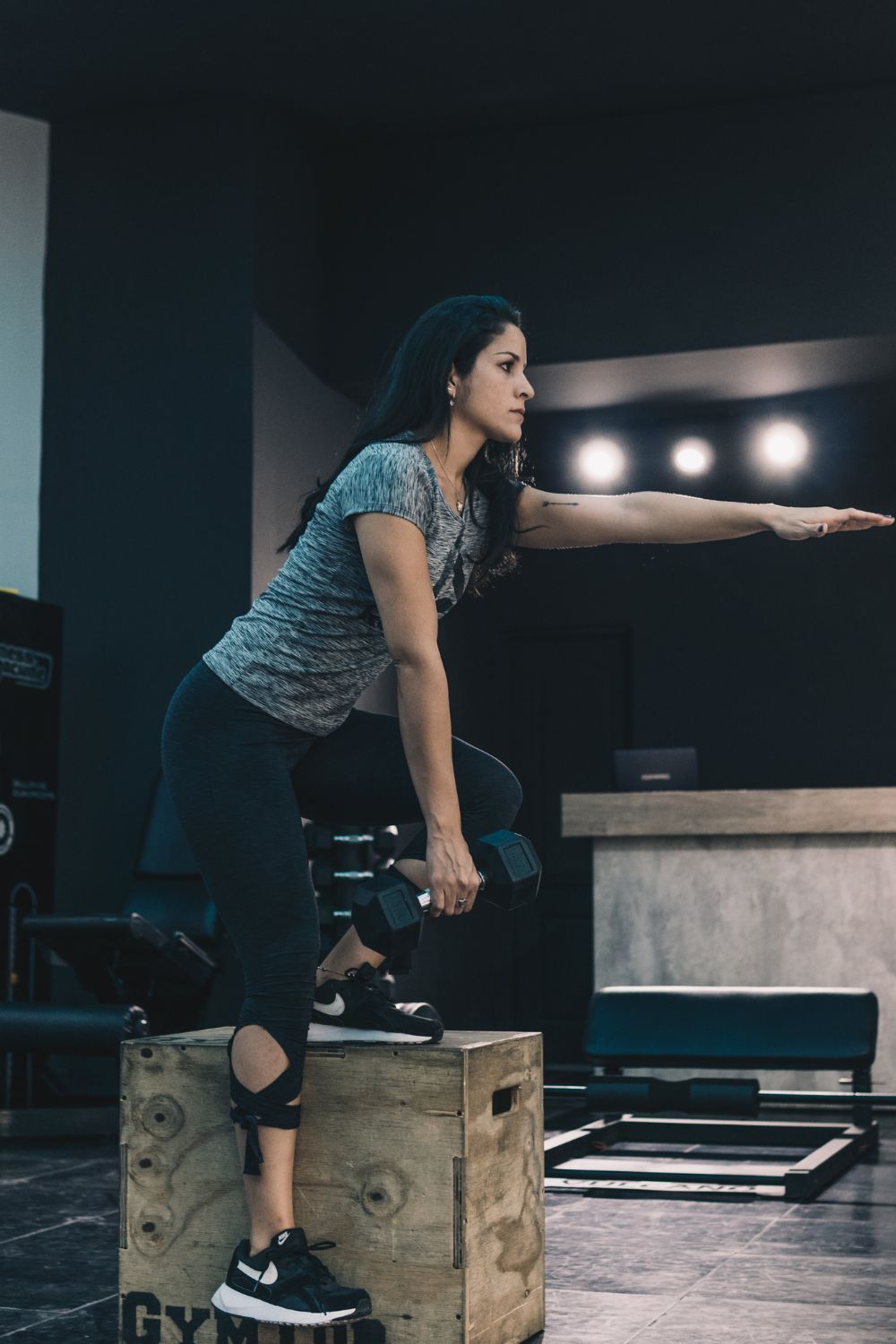Are you a fitness enthusiast who’s been hitting the gym, lifting weights, and working on your squats, only to find your legs shaking while squatting, even though you can handle the weights with ease? You’re not alone. This phenomenon can be puzzling, but it’s more common than you might think. In this comprehensive guide, we’ll delve into the reasons behind those shaky legs, explore the potential causes, and offer practical tips and solutions to help you overcome this issue.
Understanding the Squat
Before we dive into the reasons behind shaky legs during squats, let’s first understand the squat itself. The squat is one of the foundational exercises in strength training and bodybuilding. It primarily targets the muscles in your lower body, including the quadriceps, hamstrings, glutes, and calf muscles. When performed correctly, squats can help you build strength, improve muscle mass, and enhance your overall fitness.
But what do you do when you notice your legs trembling while squatting, even when the weight you’re lifting doesn’t seem to be the issue? Let’s explore some common causes and solutions.
Why Are My Legs Shaking While Squatting?
1. Muscle Fatigue
Muscle fatigue is one of the most common reasons for experiencing shaky legs during squats. Even if you can lift heavy weights, the repeated contractions of your leg muscles during a set of squats can lead to fatigue. This fatigue can manifest as trembling, especially as you approach the end of a challenging set.
Solution:
- Proper Warm-Up: Ensure you warm up adequately before your squatting sessions. This increases blood flow to your muscles and helps prepare them for the workout.
- Gradual Progression: If you’re increasing the weight you lift, do so gradually. Rapidly escalating weights can cause premature muscle fatigue and shaking.
- Recovery Time: Allow sufficient time for your muscles to recover between sets. Don’t rush through your workout.
2. Lack of Stability
Maintaining proper stability during a squat is crucial. Shaky legs can be a sign that your core and stabilizing muscles are not adequately supporting the weight, even if your primary leg muscles are strong.
Solution:
- Work on Core Strength: Include core-strengthening exercises in your routine, such as planks and Russian twists.
- Practice Balance: Enhance your stability and balance by incorporating single-leg exercises into your workouts.
- Use Proper Technique: Ensure you’re using the correct squatting technique to engage all the necessary muscle groups.
3. Poor Flexibility
Limited flexibility in your hip, ankle, or calf muscles can affect your squatting form and lead to shaky legs. When your body is restricted in its range of motion, it can result in instability.

Solution:
- Stretch Regularly: Incorporate stretching exercises into your daily routine, focusing on your hips, ankles, and calves.
- Foam Rolling: Utilize foam rollers to release tension in your muscles and improve flexibility.
4. Mental Factors
Sometimes, the trembling of your legs can be a mental response to the perceived challenge of the exercise. If you’re anxious or lack confidence in your squatting abilities, your body might react with shakiness.
Solution:
- Mental Preparation: Practice mindfulness and visualization techniques to boost your confidence and focus.
- Positive Affirmations: Use positive self-talk to build your confidence and overcome mental barriers.
5. Overtraining
Overtraining occurs when you push your body too hard without giving it enough time to recover. It can lead to various symptoms, including muscle weakness and shakiness.
Solution:
- Rest and Recovery: Ensure you’re allowing your muscles sufficient time to recover between workouts. Don’t train the same muscle group every day.
- Listen to Your Body: Pay attention to the signals your body is sending you. If you feel fatigued or shaky, it’s a sign that you might need more rest.
6. Dehydration and Nutrition
Inadequate hydration and nutrition can impact your muscle function and lead to leg tremors during squats. Muscles need proper nutrients and fluids to perform optimally.
Solution:
- Stay Hydrated: Drink enough water throughout the day, especially before and after your workout.
- Balanced Diet: Ensure your diet provides the necessary nutrients for muscle function, including protein, carbohydrates, and vitamins.
7. Pre-Existing Medical Conditions
In some cases, shaky legs during squats might be due to underlying medical conditions. If you suspect this could be the case, it’s essential to consult with a healthcare professional.
Tips to Improve Your Squat and Reduce Leg Shaking
Now that we’ve identified potential causes of shaky legs during squats, let’s discuss strategies to improve your squatting technique and minimize leg tremors.
1. Focus on Form and Technique
Proper form and technique are paramount in squatting. Make sure you’re maintaining a straight back, engaging your core, and pushing through your heels. If you’re unsure about your form, consider working with a fitness trainer to receive guidance and corrections.
2. Gradual Progression
Avoid the temptation to lift heavier weights too quickly. Gradual progression is key to building strength and stability over time. It’s better to squat with a weight you can control effectively than to rush into heavier weights that compromise your form.
3. Warm-Up and Stretch
A thorough warm-up is essential to prepare your muscles for the demands of squats. Additionally, regular stretching can help improve flexibility and reduce the risk of shaky legs.
4. Incorporate Stabilizing Exercises
Include exercises that target your core and stabilizing muscles in your workout routine. This will enhance your overall stability during squats.
5. Hydrate and Maintain Proper Nutrition
Proper hydration and nutrition are crucial for muscle function. Drink water before and after your workout, and maintain a well-balanced diet that supports your fitness goals.
6. Rest and Recovery
Give your body ample time to recover between workouts. Overtraining can lead to shaky legs and decreased performance.
7. Mental Preparation
Work on your mental strength and confidence. Positive self-talk and visualization techniques can help you overcome mental barriers that contribute to leg tremors.
Conclusion
Experiencing shaky legs during squats can be frustrating, but with the right approach and a combination of proper warm-up, technique, stability training, and mental preparation, you can overcome this challenge. Remember that it’s essential to listen to your body, maintain a balanced lifestyle, and seek professional advice if you suspect any underlying medical issues.
Squats are an excellent way to build lower body strength and improve your overall fitness. By addressing the causes of shaky legs
Design a comparison tabular on this
| Factors | Causes | Solutions |
|---|---|---|
| Muscle Fatigue | Repeated contractions during squats | – Proper warm-up – Gradual progression – Adequate recovery time |
| Lack of Stability | Insufficient core and stabilizing muscles | – Core-strengthening exercises – Balance practice – Correct technique |
| Poor Flexibility | Limited hip, ankle, or calf flexibility | – Regular stretching – Foam rolling |
| Mental Factors | Anxiety or lack of confidence | – Mental preparation – Positive affirmations |
| Overtraining | Pushing the body without proper rest | – Rest and recovery – Listening to the body |
| Dehydration & Nutrition | Inadequate hydration and nutrients | – Stay hydrated – Balanced diet |
| Medical Conditions | Underlying health issues | Consult a healthcare professional if suspected |
These solutions are designed to help you overcome leg shaking during squats and improve your overall squatting experience.
Final words
In conclusion, experiencing shaky legs while squatting, even if you can lift weights without a problem, can be attributed to various factors. Understanding the root causes, such as muscle fatigue, lack of stability, poor flexibility, mental factors, overtraining, dehydration, and potential medical conditions, is the first step toward addressing this issue.
To overcome leg shaking during squats and enhance your performance, focus on maintaining proper form and technique, gradual progression in weights, thorough warm-up and stretching, core and stabilizing muscle exercises, hydration, and balanced nutrition. Don’t forget the importance of rest and recovery, as well as mental preparation to boost your confidence.
By following these strategies, you can turn shaky legs into a thing of the past and unlock the full potential of your squatting workouts. Remember to listen to your body, stay consistent, and seek professional guidance if necessary. Your fitness journey is a continuous process, and overcoming challenges like shaky legs is just one step towards your goals. So, keep pushing forward and enjoy the benefits of a strong and stable lower body. Happy squatting!
External Resources
For more insights on strength training, squatting, and improving your leg stability, check out these valuable external resources:
These resources provide in-depth information and additional exercises to help you enhance your squatting skills and reduce leg shaking.

Hey there, it’s Mike Rrsq, the Editor-in-Chief over at Jsquat.com, and I’m absolutely obsessed with all things squat fitness! I’ve been lucky enough to get some serious recognition for my work in this field. With a solid background in the fitness and wellness industry, I’ve been there right from the get-go, helping shape this website into what it is today.
You see, I’m not just the boss around here; I’m also a passionate contributor. I love sharing my insights through my articles, and trust me, they’re not your run-of-the-mill stuff. Each piece I write is a labor of love, filled with my expertise and real-world experience in the fitness universe. So, if you’re into fitness and looking for some inspiration, you’re in the right place!

